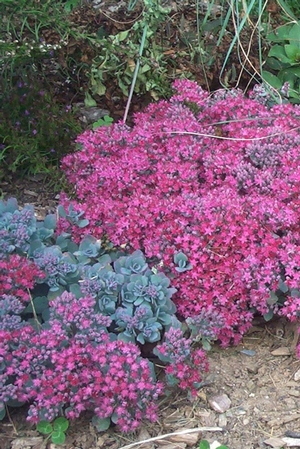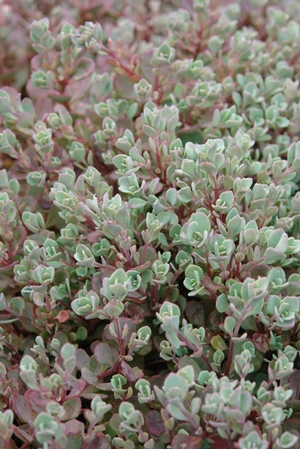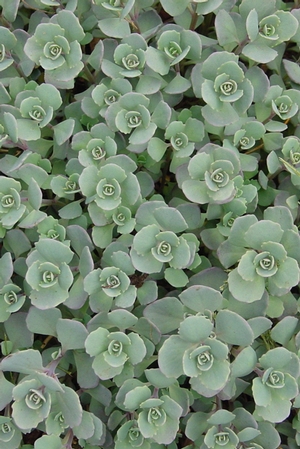Sedum cauticolum 'Lidakense'
Common: stonecropSedum cauticolum 'Lidakense' - 72 per flat
- Height: 10"-12"
- Spread: 12"
- Spacing: 10"-12"
- Hardiness Zone(s): 3-9


Sedum cauticolum 'Lidakense' - 72 per flat



Delightful round blue foliage on low spreading plants with gracefully arching stems. In late summer the foliage is completely hidden behind tiny brilliant pink star flowers. Tough and easy to grow, it loves a hot dry location and thrives in containers and rock walls.
Prefers average to dry, well-drained soil in full sun. Intolerant of wet soils. Propagate by seed and cuttings, although division seems to be the easiest for most. Excellent as a perennial border, in rock gardens, or in mass plantings.
If only all plants were as easy to grow as sedums, then gardeners would clothe the suburbs in unbroken chains of color and life. They pack considerable water reserves in their succulent, spongy leaves, which not only helps them in times of drought, but also makes them exceptionally easy to root from cuttings broken off the plants in summer and stuck anywhere you want a new plant to grow. Some of the small creeping species can even be crumbled up and cast about like seeds. They will sprout up quickly as a thick groundcover -- what a heady feeling that can be for the underconfident gardener. There are several thick-crowned, clumping Sedums in our flora, and a number of the low, creeping types that fill in spaces between larger plants or crevices in rocks or cliffs. They all produce broccoli-shaped or flat-spreading flower heads with upward-facing, starry-crystalline blooms that must be tireless nectar producers, for the flowers are covered with satisfied insects. They seem especially attractive to hoverflies, whose larvae are important aphid predators in the garden. Many of the creeping types are evergreen or semievergreen, with leaves of many shapes, sizes and colors. They make adaptable low groundcovers for the rock garden, ledge, or between paving stones. - William Cullina, The New England Wild Flower Society Guide to Growing and Propagating Wildflowers, p. 188